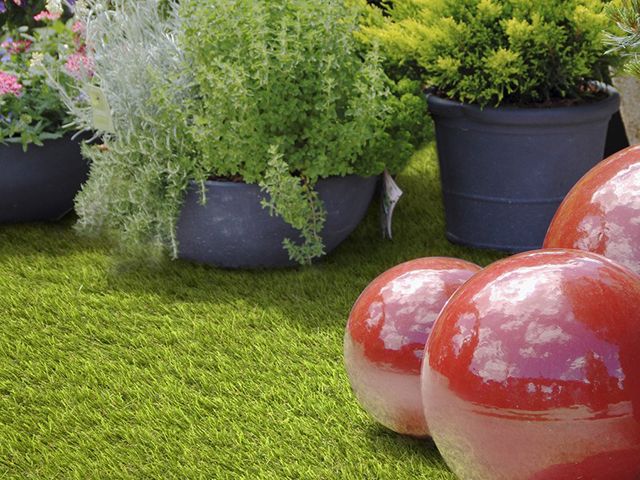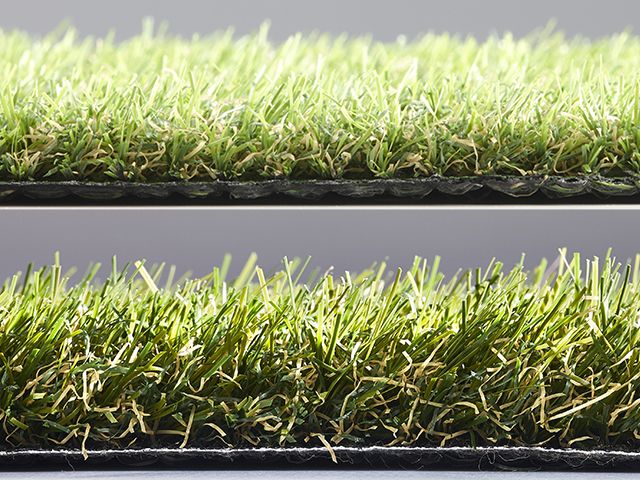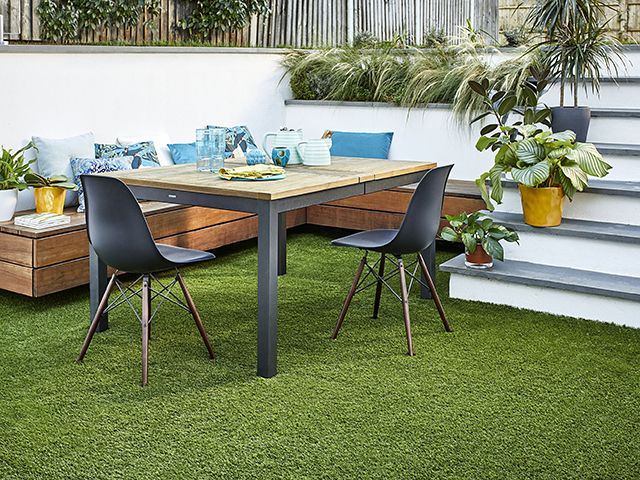
Buyer’s guide: the best artificial grass for your garden
For a tough, durable, family-friendly finish for your garden, artifical grass is the clever choice. Here’s how to find the perfect style for your outdoor space.

Image: Lovage artificial grass, The Rug Seller
For the everyday family household, artificial grass has a lot to offer a garden. It’s virtually maintenance-free in comparison to real lawns – meaning no lawnmower required too, and unlike real grass, it’ll survive droughts, heatwaves and even the most ferocious game of garden football.
It also means no muddy footprints or pawprints tracked in from outside, and on that note it’s pet-friendly and easy to clean.
It’s easy to lay, can be enjoyed almost straight away and offers a flat and even grassy surface which makes it great for those with limited mobility.
With all those pros, you can see why it’s becoming a more and more popular choice, but with so many varities available, how do you choose the right style for you? Daniel Prendergast from specialist online shop Ultimate Grass is our go-to with all the information you need…

Image: A comparison of a medium and high pile artificial grass. Margam, above, starts from £9.95 per sq m, while Moreton starts from £11.95 per sq m, both Ultimate Grass
Pile Height
Much like a carpet or rug, pile refers to the length of the individual blades of the artifical grass. Longer pile lengths typically provide a softer, more luxurious flooring, but this may also depend on the weight of the grass too.
Longer piles are more susceptible to flattening and hold more water, but they’re still the preferred option for many for a denser finish. However, shorter piles are cheper on the whole, and great for high traffic areas.
Weight
The weight of the grass with or without the backing can be used to compare density of artifical grass too. Heavier products are largely softer underfoot and more dense, but again more expensive.
Colour
When choosing the colour of your grass, think about the desired effect. Some shades of green are less realistic than others, but offer a fresh, bright and vivid lawn. Look for products that have a ‘thatch’ effect – a beige/brown curled pile that sits below the green strands and creating the impression of cut grass within the product – it’s more realistic and increases the density. Styles are available from Ultimate Grass with this thatch incorporated.

Image: Carpetright
Mix of materials
The majority of artificial grass is made fom mixture of Polypropylene (PP) and Polyethylene (PE). Both are syntehtics plastics, but Polypropylene is generally a harder wearing product but doesn’t feel quite as soft to touch as Polyethylene. The mix of the plastics in each product is some indication of how soft they feel and how hardwearing they may be. For example, a product with more Polyethylene in it is likely to feel slightly softer to touch but may be slightly more prone to wear.
Caring for artificial grass
To keep your artificial grass looking it’s best, you’ll need to brush it regularly in the opposite direction of the artificial fibre. Regularly remove leaves and trim hedges and trees around the law to limit the amount of leaves that can fall on them. Apply weed killer twice a year to the whole area to prevent weeds growing and to kill any stray ones. Use an artificial turf spray to clean away any urine from your pets
Are you opting for artifical grass in your garden? Let us know by tweeting us @goodhomesmag or posting a comment on our Facebook page.




